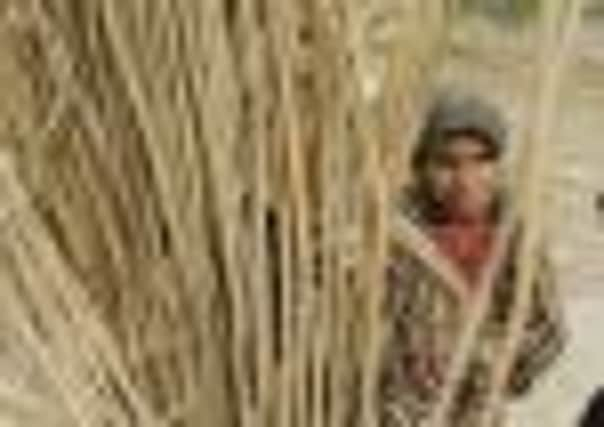Botanics exhibition highlights key work in the Middle East


Paradise Restored features a range of images and artefacts to show the work of restoration projects carried out by RBGE and like-minded organisations in the region.
The Edinburgh garden has links with the region going back more than 60 years, and has recently helped in projects such as the creation of the Oman Botanic Garden.
Advertisement
Hide AdAdvertisement
Hide AdThe exhibition, on display in the John Hope Gateway visitor centre until September 30, focuses on ongoing Botanics projects in Turkey, Afghanistan, Iraq and the Arabian Peninsula.
RBGE head of exhibitions Ian Edwards said: “Botanical exploration of the region by RBGE botanists goes back more than 60 years.
“Pioneering expeditions included Peter Davis to Turkey and Ian Hedge to Afghanistan in the 1960s, and Tony Miller to Iran and Yemen in the 1970s. Yet the work is far from over.”
Among the misconceptions that the Botanics aims to tackle through the exhibition is the Middle East often being considered as mostly desert.
In reality, there are a variety of landscapes – from mountains to marshland – as well as hidden pockets of biodiversity for plants and animals .
The Botanics said decades of overgrazing following the breakdown of traditional land management, conflict and global climate change have had a profound effect.
Tony Miller, director of the Centre for Middle Eastern Plants, added: “A fundamental motivation behind RBGE’s recent work in Afghanistan and Iraq is to help equip a new generation of professionals with the skills they need.
“Ambitious new projects in wealthier parts of the Middle East, such as Oman Botanic Garden, have also relied on the unique expertise of RBGE scientists and horticulturists.”
Advertisement
Hide AdAdvertisement
Hide AdMany of the photographs featured in Paradise Restored were taken by RBGE staff working in the region. Iranian artist Haleh Jamali contributed a mural depicting six of the region’s most important trees.
The Botanics said each of these tree species has such an important place within local culture that they could be described as “trees of life”.
A black goat-hair tent and other pieces are on loan from the Nomads Tent, a city carpet and tribal object warehouse that supports handcraft and family businesses in the region.
Dr Azzam Alwash, of non-governmental organisation Nature Iraq, said: “After 35 years of war, Iraqis have been kept isolated. The result is a country full of people hungry for the knowledge that will allow Iraq to play a positive and equal role within the global community. Exhibitions such as this go a long way to highlighting the steps being taken.”
£40m plans for revamp revealed
DETAILS of a £40 million project to revamp the Botanic Garden have been unveiled.
The attraction has revealed details of a long-awaited blueprint which will include replacing or upgrading all of its historic glasshouses and building a school of horticulture and botany.
The new masterplan follows a £1.5 million funding boost from the Scottish Government.
Several new state-of-the-art structures are to be created in a bid to increase visitor numbers by 40 per cent. Some of these new eco-friendly buildings will replace existing research houses which were built in the 1960s and 1970s and expected to last 20 years.
Advertisement
Hide AdAdvertisement
Hide AdThe move will mean all of the Botanics’ research facilities being centralised on the one site. Professor Stephen Blackmore, regius keeper at the Botanics, said: “The masterplan will be one of the most significant developments in our long history.”